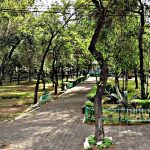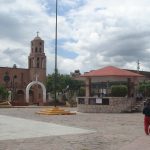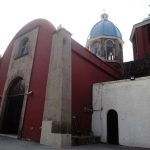
特纳尤卡(Tenayuca)遗址比特奥蒂瓦坎(Teotihuacan)近得多,乘坐地铁公交3号线即可到达。只要坐到线路的最终站,遗址就在那里! 从技术上讲,该遗址位于墨西哥州的特拉尔内潘特拉德巴兹(Tlalnepantla de Baz),是一座防御城的遗迹,大部分建于 1200 年代末,可能由纳努(Hñañu)和奥托米(Otomí)建造,这些通常被称为奇奇梅卡(Chichimeca)- 纳瓦特尔语的贬义词。
遗迹显示,该地点早在古典时期就已被占领。 但人口在后古典时代早期有所增加,并在图拉(Tula)衰败后持续增加,当时特纳尤卡(Tenayuca)被认为一个重要的地区强国。到14世纪中叶,特纳尤卡(Tenayuca)被占领,并被附近的阿斯卡波萨尔科 (Azcapotzalco) 取代其强国地位。大约 1434 年,特诺奇蒂特兰(Tenochtitlan)征服了这座城市,让阿兹特克(Aztec)人完全掌控该地。编年史家伯纳尔·迪亚斯·德尔·卡斯帝略(Bernal Díaz del Castillo)将特纳尤卡(Tenayuca)称为“蛇之镇”,但后来这个地方被完全废弃。
今日所见的是于1925年被重新发现的。特纳尤卡(Tenayuca)是典型的阿兹特克(Aztec)双金字塔最早的典范。因此,认为是阿兹特克人复制了此类的风格,且其外形比位于特拉特洛尔科(Tlatelolco)的类似神庙更好。如许多其他神庙遗址一般,特纳尤卡(Tenayuca)代表多个建造阶段相互叠加的情况。遗址上的所有蛇雕塑都与崇拜火和太阳有关。离主金字塔200米处有一座精英住宅区的遗迹,部分房间内还保留着一些幸存的石膏地板。场地入场费为55比索。工作时间:周二至周日,上午 10 点至下午 5 点

One of Mexico City's oldest continuously inhabited little towns . . .

The complex history of the Pueblo San Juan de Aragón...

A sprawling old neighborhood on the flats at the north of the lake...

A remarkable old church atop an ancient, forgotten pyramid...

One of the most ancient villages in the north of the city, Zacatenco dates from 1200 BCE.